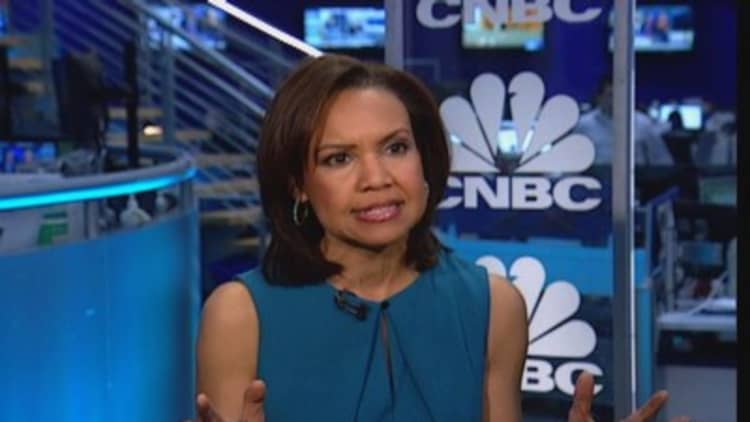Discussing death and disability hardly ranks as a favorite activity for most people. But failure to plan adequately for the financial consequences involved could mean unneccesary hardship for your loved ones and you.
Risk management should form the basis of any financial plan, according to Clark Randall, a certified financial planner and founder and owner of Dallas-based Financial Enlightenment.
"It's the first thing you should look at before investing—it's critical," Randall said.
The easiest and most cost-effective way for most people to mitigate these risks is through insurance products, such as disability, life and long-term-care insurance.
That may be common knowledge, but discomfort with the subjects and the complexity of insurance products prevent many people from obtaining necessary coverage in advance of a life-changing event, according to experts.
(Read more: Tips for year-end planning)
"We have a natural inclination to avoid topics of death and disability," said Tim Maurer, a certified financial planner and vice president of the Financial Consulate. "But they are extremely important."
While people know they should be planning for these events, "it should be a bigger priority than it often is," Maurer said. "It's like flossing: Everyone knows you're supposed to do it but few people actually do."
Disability Insurance

This "may be the most misunderstood product on the market," Maurer said. "There are a lot of moving pieces, which makes it complicated. And it's expensive."
That's no reason to discount it, though. Between the ages of 25 and 65, people's chances of becoming disabled are much higher than their chances of dying, according to various studies.
(Read more: Post-retirement financial plans are key)
Many people rely on a company disability policy, but most such policies don't adequately cover income loss, Maurer said. Policies have many qualifiers, he said, perhaps the most important being "any occupation" versus "own occupation" coverage.
An "any occupation" policy is stricter, paying out if you can't work in any job reasonably suitable for you; "own occupation" policies pay if you're unable to perform your current job. That's an important distinction for professionals—for example, surgeons, who would want to be compensated if they injured a hand and could no longer perform operations.
Many people lack adequate disability coverage, said Jack Riashi Jr., a certified financial planner with Bloom Asset Management.
"The number isn't very high in terms of people who have it," he said. "And if there isn't a group plan in place [for them at work], the number of people covered is really pretty low."
For someone still working, especially in a one-income household, disability is as important as life insurance, Riashi said, adding, "You have to protect the income."
Group policies generally cover 60 percent of income, he said, but it varies. Some may offer short-term coverage or benefits may not start immediately, in which case a supplemental policy makes sense.
(Read more: Navigating open enrollment options)
Riashi recommends disability policies that last until at least age 62—as most people work that long—unless you have enough financial security to be without income until you retire.
Life insurance: Most people are familiar with the concept, but it doesn't make them any more eager to discuss it.
"I've had many situations when people are averse to buying life insurance," said Randall at Financial Enlightment. He stressed the obvious question: What if something happens to you, and your family is left without an income stream?
"Life insurance isn't the problem—it's the solution for the problem," he said.
Though people have various options—including term, universal, whole life—getting the right amount of insurance is what's most important, he said.
(Read more: Year-end financial checklist for investors)
"I've delivered many death benefit checks, and I've never ever had a beneficiary ask what type of insurance it was," Randall said. "They always ask, 'How much is the check?' "
What type you choose has to do with factors such as cash flow, discretionary income, age and financial objectives, he said. Over the past 10 years, term rates have become so compelling that people buy that most of the time.
In addition to the death benefit, life insurance coverage can be used as a retirement savings vehicle. Certain policies can build up a cash value that can be withdrawn tax-free, although some advisors warn against it.
"Life insurance should be used only to cover catastrophic [situations]—you start getting in trouble when you start using it for retirement," Riashi said, adding that the investment costs of doing that are often high and the choice of funds is limited.
(Read more: Afraid of living too long? Buy this)
Maurer added that the tax advantages with life insurance are not as good as those with an individual retirement account, so an investor should max out other qualified retirement accounts before investing inside life insurance.
Insurance isn't used as much in estate-tax planning, he said.
When the estate tax was in flux, people frequently used insurance to cover potentially large liabilities when they died. According to experts, now that the estate-tax exemption is set at an inflation-adjusted $5 million, it's not so necessary for people with smaller estates.
By the numbers:
- 30 percent of American households have no life insurance. (LIMRA)
- About 100 million workers are without private disability income insurance. (Social Security Administration)
- 68 percent of adult Americans have no savings earmarked for an emergency. (U.S. Federal Reserve Board)
- 33 percent of consumers believe they do not have enough life insurance (LIFE 2013 Insurance Barometer Study)
- 70% of people over age 65 will require some long-term care at some point in their lives. (U.S. Department of Health and Human Services)
- The average private pay cost of a nursing home stay in 2012 was $88,000 per year. It exceeded $100,000 in 10 states. (AARP Public Policy Institute)
Long-term-care insurance: As life expectancies rise, it's increasingly important to establish a plan for extended medical expenses—such as assisted living or home care—that Medicare doesn't cover, financial advisors say.
In the U.S., the median annual rate for care ranges from $40,000 for at-home care to almost $84,000 for a private room in a nursing home, according to a study by Genworth's 2013 Cost of Care Survey.
(Read more: Dealing with Alzheimer's)
For many people, long-term-care coverage is the best way to mitigate these significant costs.
"Once someone gets into their 50s, we usually have a conversation" about it, Randall said.
It's important that a policy increases with inflation, he said. Inflation riders on long-term-care policies typically start growing the day you buy the policy compared with disability insurance policies, which don't adjust for inflation until you become disabled.
Maurer said that the best time to buy a policy is in your mid-50s. Underwriting bans kick in and costs rise substantially once you hit 60, and by 70 it is cost-prohibitive.
Additionally, he said, the average usage for long-term-care insurance is two years, so buying a policy covering up to five years should be more than enough.
Annual premiums range from $1,000 to $4,000, with people in their 50s and in good health tracking at the low end.
While many people benefit from long-term-care insurance, it isn't right for everyone.
"If you have $2 million to $3 million in investable assets, you may be able to self-insure," Maurer said.
(Read more: Do annuities fit into retirement plan?)
If you're considering a long-term-care policy, it may be wise to buy sooner rather than later— especially if you're a woman, experts say.
While premiums on such policies have historically been the same for women and men, that's changing. Many companies are increasing premiums for women (some by as much as 40 percent) because they live longer and tend to require more long-term care.
—By Jennifer Woods, Special to CNBC.com




